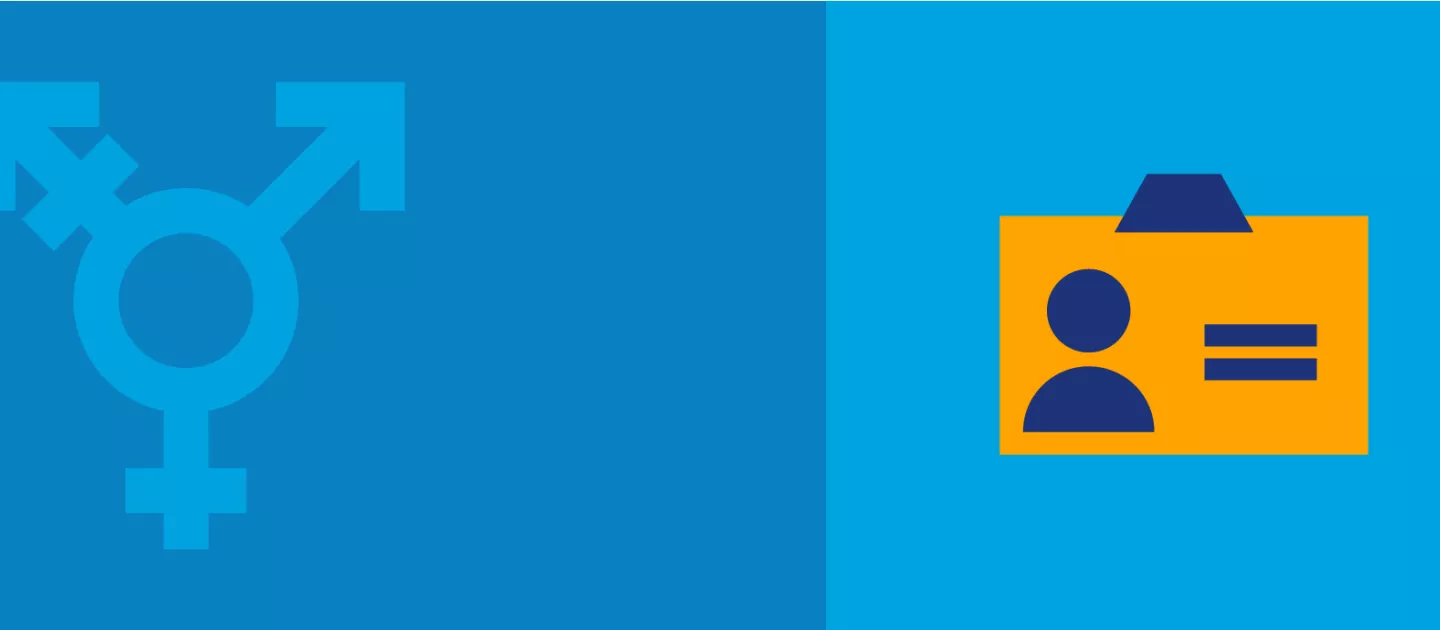This section focuses on trans and gender diverse young people’s experiences of names and pronouns. In the first instance, please watch the video about pronouns.
This section also contains key findings from research, impactful quotes from young people, starting points to think about what you can do as well as resources for further study. Please navigate through this section and complete the corresponding worksheet in the workbook.
The guidance counsellor was like, ‘okay we have to make a list of things that you want.’ So I was mentioning that I wanted to be called [Oisin]. […] The first thing he said was, ‘I don't know what we're going to do about the name because we can't.’ […] I was just quiet, almost crying, going outside the class. Even though they told me they were on my side, I feel like they weren't really.
(Oisin, Age 16)

Research
Trans and gender diverse youth explained how:
- They stopped using their birth name and pronoun because they were incongruent with their gender identity
- They were commonly called by their birth name (misnamed) and/or by their birth pronoun (misgendered)
- Being misnamed and/or misgendered caused them to feel embarrassment and upset.
- They felt that school staff who misnamed/misgendered them should acknowledge it by apologising respectfully and move on
- Intentional misnaming and misgendering is a form of transphobic harassment
International research has found that trans and gender diverse students:
- Who experience misnaming and misgendering are less able to concentrate while in school and more likely to cease participating in schooling (Jones, et al. 2016)
- Greatly appreciate school staff who assist them in asserting their chosen name and affirm their pronouns (Johnson et al, 2014)
Consequently, researchers have called on schools to:
- Address name changes on trans and gender diverse youth’s identification documents and documentation (Sausa, 2005)
Although Eoin’s principal accepted him as a trans man, she would not let teachers call him Eoin. Furthermore, to avoid causing him distress, his teachers stopped calling him by his birth name. Having “no name” left Eoin feeling “invisible” and unable to focus on his schoolwork. This sense of invisibility led Eoin to want to quit school:
I was like, ‘I can't come here anymore if I'm going to be called my old name sometimes, and not be called anything else. I feel like a blank here.'
(Eoin, Age 21)
It was only when Eoin informed his principal of his attention to quit school that she permitted teachers to use his preferred name.
What you can do
- Make sure to use a trans and gender diverse student’s preferred name and pronoun
- Ensure trans and gender diverse students’ names and pronouns are changed administratively in a timely manner, including on the class register, forms of identification, and official records
- Inform and educate peers and staff that a student has changed their name and pronoun to reduce the likelihood of misnaming, misgendering and rumours
- If you are unsure of a student’s preferred name or pronoun, privately and respectfully ask them which they prefer
- Ensure that all written communication is addressed to the young person in their preferred name/pronoun.
- If you misname or misgender a trans or gender diverse student, apologise respectfully and move on
